
 |
Some of the variants of the word ‘Georgia’ occur only once, while others are frequent. Look at some of the most frequent variants of this variable. Can you identify any geographic areas? Which linguistic features are distinguishing for the different areas? |
The most frequent variant of ‘Georgia’ is [dʒɔɚdʒə] with 75 occurrences in the data set. If you choose this variant you should see the following map:
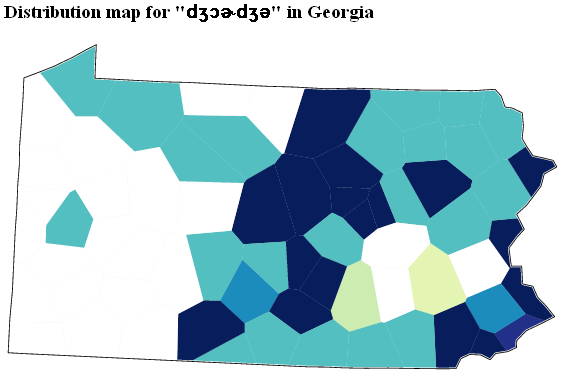
The map shows that the variant [dʒɔɚdʒə] is used mostly in eastern and northern parts of Pennsylvania.
The second most frequent variant of ‘Georgia’ is [dʒɔrdʒə] with 23 occurrences. This variant is used mostly in western parts of Pennsylvania:
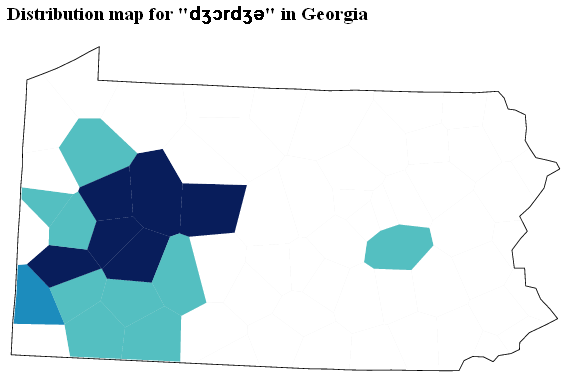
Using the Regular expressions box comes in handy when you want to find out which features in the word ‘Georgia’ that are the most decisive ones for the observed geographic distributions. Of the two main variants that we just made the maps of, the western one has an [r], while the eastern and northern variant has an r-colored schwa [ɚ] instead of [r].
Typing ‘r’ in the box for regular expressions and clicking Show distribution map will automatically select all variants including an ‘r’ anywhere in the transcription and show the distribution map for these variants:
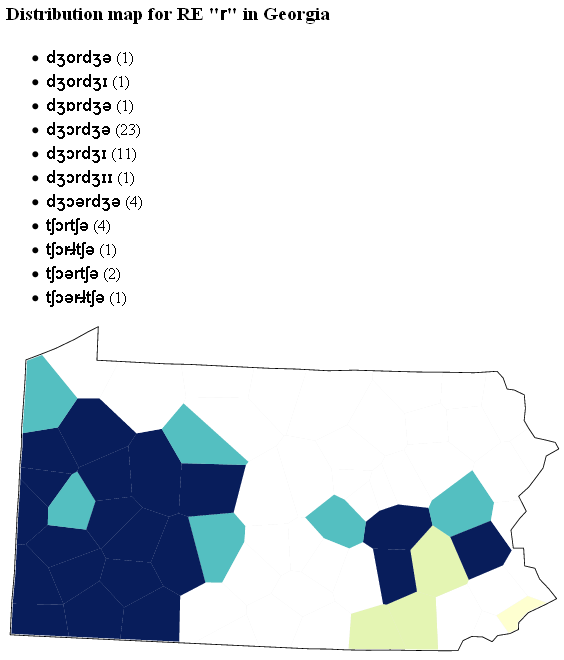
If you type ‘ɚ’ in the regular expressions box, you get the opposite map in this case (since IPA symbols are not available on the keyboard you can, for example, copy the symbol ‘ɚ’ from the character list and paste it in the box):

 |
A number of variants, all of them very infrequent, start with a ‘t’ instead of a ‘d’. By pressing the Ctrl button on your keyboard while you click on the variants, you can choose all of them before you click Show distribution map. In which area are the variants starting with a ‘t’ used? |
If you chose all variants starting with a ‘t’, this is the map you should see:
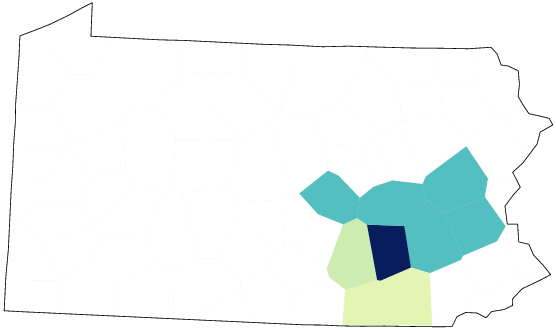
 |
Look at the distribution maps of the word ‘thousand’. What kind of variation do you find for this item? |
The first vowel in the word ‘thousand’ has the realizations [a], [æ] and [ɛ]. The variation in this vowel, however, does not show any clear very geographic variation. A feature that shows more geographic coherence is realization of the ‘s’ in ‘thousand’. For example, choosing all variants with a voiceless [s] gives the following map:
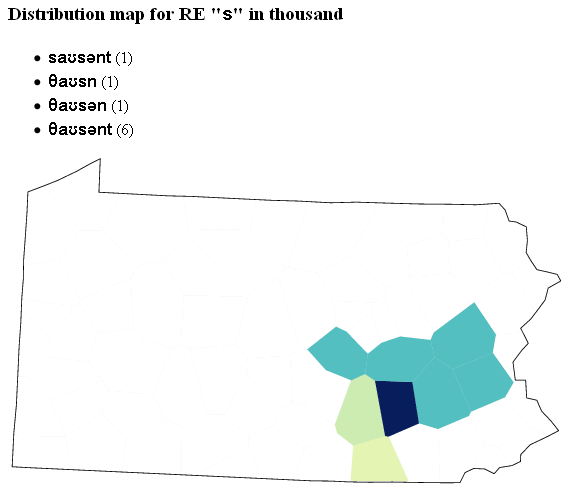
The map of voiceless [s] in ‘thousand’ looks very similar to the one of [t] in ‘Georgia’ above. They both display the same south-eastern area in Pennsylvania. This part of Pennsylvania was settled mainly by Germans. When the LAMSAS data was collected a number of the speakers in this area still had “Pennsylvania Dutch” (the variety of German spoken in Pennsylvania) as their first language and English as their second language. German language has influenced the English spoken in this area. The maps above show examples of features that are the result of German influence on English.